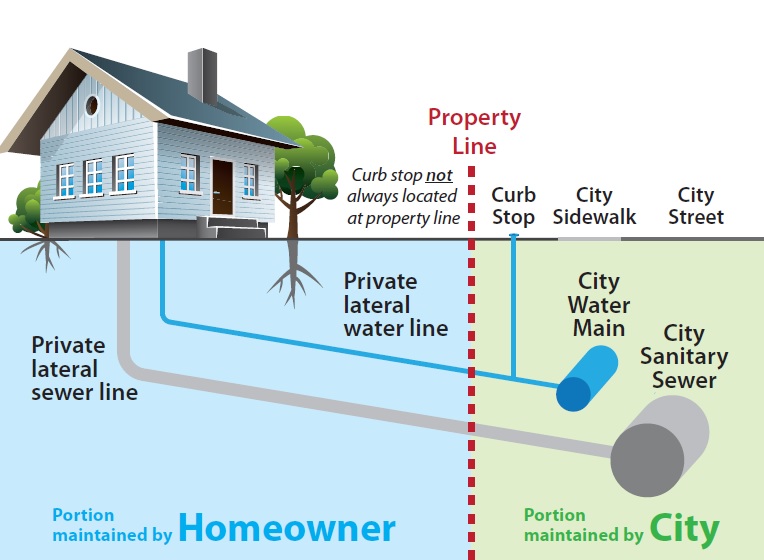When sewer lines become blocked, whereby preventing wastewater from flowing through drainage pipes, blockage occurs. The thick, dark water creates as sewage is a potential hazard, as it features contaminants and viruses that can present a danger of serious illness if subjected to individuals or animals. In case you’ve got a sewage backup in your basement, you’ll have to fix it quickly. Being aware of the causes of sewer backups, though, can help you prevent a hazardous situation in your basement or home. Here’s how to prevent and handle sewage backups on your pipes:
Sewage Backup Causes
- Clogs — Sewage can back up into your house when your residence’s drain pipes or main sewer line becomes obstructed. For example, if one bathroom produces a sewage backup, the drain attached to this toilet will probably be clogged. But if all bathrooms or bathtubs on your house produce backflows, then there might be a clog in the main sewer line or the sump pump failed. Clogs can include hair, grease, or other solid materials that wind up in the drains.
- Tree Roots — Trees can grow really long roots which intertwine with your sewer line. Roots can grow to a pipe and cause openings or crush the sewer line by growing around it. Even if the roots in your yard are not the problem, roots from nearby trees may reach your sewer line and damage it.
- Damaged Sewer Lines — In earlier times pipes were made from cast iron and clay piping that doesn’t last long. Aging sewer systems may break down and crack, causing sewage copies and flooded basements. Cosmetic sewer lines have become the norm. Yes, considerable amounts of rain can overburden your city’s sewer lines. When the public sewer can not handle surplus rain, the water can make its way into sewer lines that are connected. This puts your home in danger of water backflows. Cooking oil may harden within your pipes; it gradually prevents debris from draining, creating a clog. To properly dispose of fat or grease, pour it into a heat-resistant container and then toss it in the garbage after it melts.
- Dispose of newspaper products correctly. Flushing hygiene products such as paper towels, diapers, or feminine products down the toilet can quickly clog your sewer line. Save yourself some trouble and discard paper products in the garbage.
- Install a new plastic pipe or cut tree roots. If tree roots still grow in your sewer lateral, then cut the roots occasionally.
- Install a backwater prevention valve. This fixture allows the sewer to leave but prevents it from backing up into your home. Backwater valves are typically installed to a sewer line and at times to a drain line in the cellar. Make sure your sump pump does not sit on debris such as silt or gravel, which could be sucked into the pump, ruining the motor. Instead, place it on a steady level brick. Additionally, ensure the sump basin has a filter fabric around it to stop debris from coming from.
What You Can Do If You Have a Sewer Backup
Calling a professional restoration company is your very best way to deal with sewage backup in your basement. However, here’s what you can do to mitigate the damage in your home before the restoration team arrives:
- Evacuate the flooded area. Sewage contaminates are hazardous to pets as well.
- Turn off electric power from the calm area. Electrical appliances or wires might come in contact with standing water or moist materials.
- If the primary circuit breaker is in the cellar, be careful. If you can not safely turn off the power, do not go near electrical devices.
- Wear protective clothing like a facemask, glasses, gloves, and rubber boots before walking through sewage water.
- Close off the valve for the main water line of your house. Have a look at how to shut off utilities throughout a disaster.
- Notify your insurance company concerning the sewage backup. Bear in mind that sewer backups aren’t covered by standard homeowners insurance unless you have obtained additional insurances for sewers and drains.
- Notify your municipal authority or sewer section if your house is connected to a public sewer.
- Don’t use the water supply system in your house before the backup issue is fixed — do not flush toilets or drain bathtubs and sinks.
- Open windows or doors to let fresh air in and ventilate the region.
- Insert some chlorine bleach into the position water to help disinfect.
For Professional Sewage Cleanup, Telephone the PuroClean Water Damage Restoration Experts
When a sewer backup in the basement, call a restoration professional right away to fix the black water harm. Managing the contaminated water yourself can put you at risk of contracting diseases. Looking for mold removal? Check them out here.
